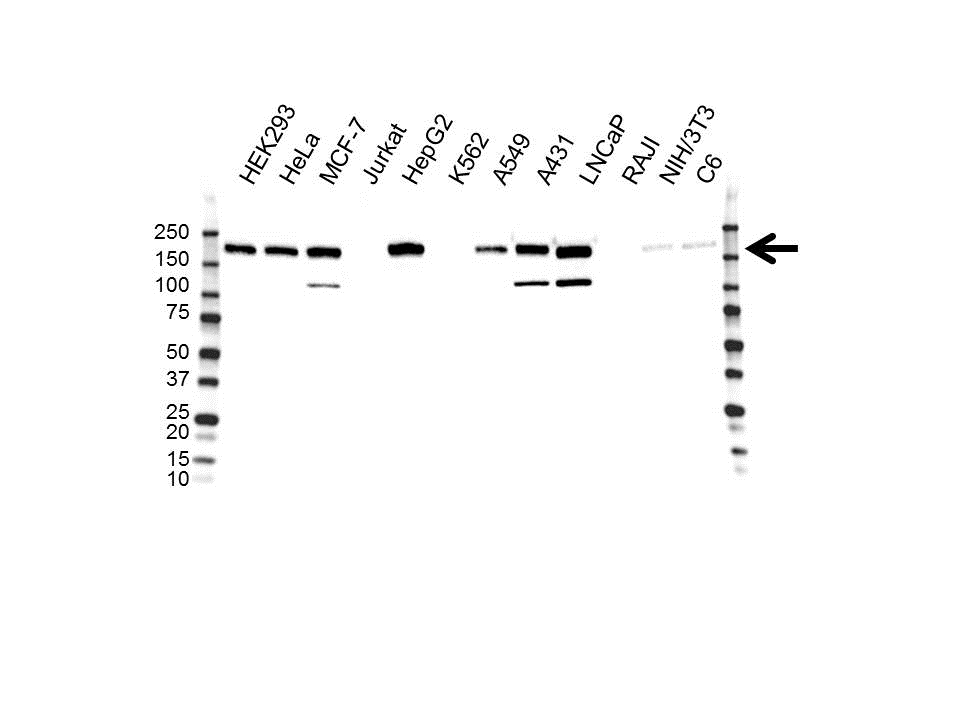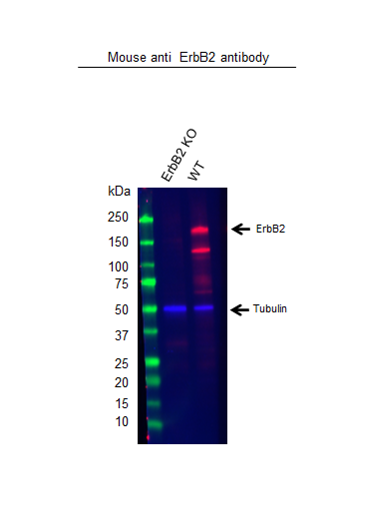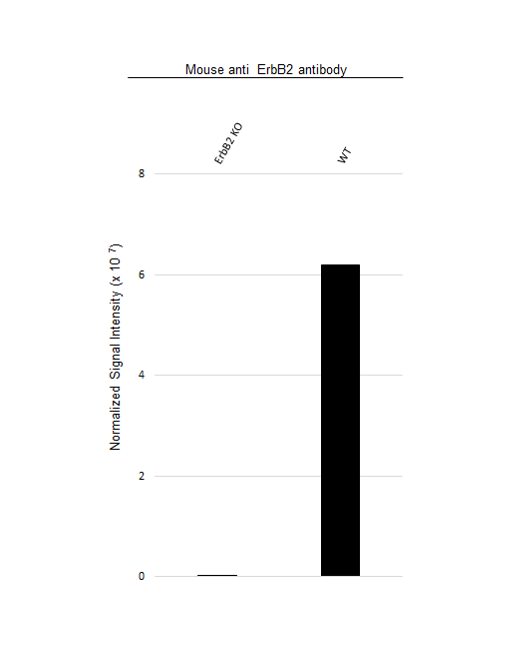ErbB2 antibody | OTI4F10



Mouse anti ErbB2
- Product Type
- PrecisionAb Monoclonal
- Clone
- OTI4F10
- Isotype
- IgG2a
- Format
- Purified
- Specificity
- ErbB2
- Target Species
- Human
- Western Blotting
- Anti ErbB2 detects a band of approximately 185 kDa in HepG2 cell lysates.
- Species Cross-Reactivity
-
Target Species Cross Reactivity Mouse Rat - N.B. Antibody reactivity and working conditions may vary between species.
- Product Form
- Purified IgG - liquid
- Preparation
- Mouse monoclonal antibody purified by affinity chromatography from tissue culture supernatant.
- Buffer Solution
- Phosphate buffered saline.
- Preservative Stabilisers
- 0.02% Sodium Azide (NaN3)
1% Bovine Serum Albumin
50% Glycerol - Immunogen
- Recombinant protein corresponding to amino acids 676-1255 of human ErbB2 (NP_004439) produced in HEK293T cells
- Approx. Protein Concentrations
- IgG concentration 0.5 mg/ml.
- Regulatory
- For research purposes only.
- Guarantee
- 12 months from date of despatch.
- Acknowledgements
- PrecisionAb is a trademark of Bio-Rad Laboratories.
| Application Name | Verified | Min Dilution | Max Dilution |
|---|---|---|---|
| Western Blotting | 1/1000 |
| Description | Product Code | Applications | Pack Size | List Price | Your Price | Quantity | |
|---|---|---|---|---|---|---|---|
| Goat anti Mouse IgG (H/L):HRP | STAR207P | WB | 2 ml |
|
Log in | ||
| List Price | Your Price | ||||||
|
|
Log in | ||||||
| Description | Goat anti Mouse IgG (H/L):HRP | ||||||
- Synonyms
- HER2
- MLN19
- Neu
- Ngl
- UniProt
- P04626
- Entrez Gene
- ERBB2
- GO Terms
- GO:0003677 DNA binding
- GO:0016021 integral to membrane
- GO:0004716 receptor signaling protein tyrosine kinase activity
- GO:0005006 epidermal growth factor receptor activity
- GO:0043125 ErbB-3 class receptor binding
- GO:0005524 ATP binding
- GO:0005634 nucleus
- GO:0006350 transcription
- GO:0007507 heart development
- View More GO Terms
- GO:0008022 protein C-terminus binding
- GO:0008283 cell proliferation
- GO:0042802 identical protein binding
- GO:0014065 phosphatidylinositol 3-kinase cascade
- GO:0019903 protein phosphatase binding
- GO:0048015 phosphatidylinositol-mediated signaling
- GO:0042060 wound healing
- GO:0043235 receptor complex
- GO:0043406 positive regulation of MAP kinase activity
- GO:0045449 regulation of transcription
- GO:0045765 regulation of angiogenesis
- GO:0045785 positive regulation of cell adhesion
- GO:0046777 protein autophosphorylation
- GO:0046982 protein heterodimerization activity
- GO:0048471 perinuclear region of cytoplasm
- GO:0050679 positive regulation of epithelial cell proliferation
VMA00147
If you cannot find the batch/lot you are looking for please contact our technical support team for assistance.
Please Note: All Products are "FOR RESEARCH PURPOSES ONLY"
View all Anti-Human ProductsAlways be the first to know.
When we launch new products and resources to help you achieve more in the lab.
Yes, sign me up


